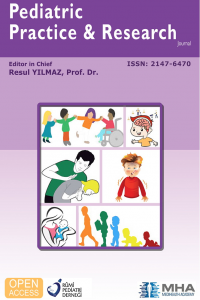Chronic granulomatous disease and diagnostic algorithm
Chronic granulomatous disease and diagnostic algorithm
Recurrent bacterial and fungal infections that involve the lungs, lymph nodes, liver and other visceral organs. Granuloma formation may occur in the tissues of the infection area, depending on the prolongation of infections in KGH. Hypergammaglobulinemia (IgG ), hepato-splenomegaly and enteritis are frequently observed. The X-CGD form, which is seen especially in boys, usually appears before the age of 1 and is more severe. Mild phenotypes, especially autosomal recessive form (p47-phox deficiency) may occur at a later age. The patient and healthy neutrophil population, which constitute the carrier character in mothers in X-linked form, are observed. Mild clinical signs can be observed in approximately 50% of mothers. In some rare cases, CGD symptoms can be observed in women due to x-ch inactivation deviation.
Keywords:
diagnostic algorithm,
___
- Reference : 1. Köker MY, Camcıoğlu Y, van Leeuwen K, Roos D. Clinical, functional, and genetic characterization of chronic granulomatous disease in 89 Turkish patients. J Allergy Clin Immunol, 2013, 132 (5): 1156-1163e5. 2. Roos D., de Boer M. Molecular diagnosis of chronic granulomatous disease. Clin. Exp. Immunol. 2014;175:139–149. 3. Booth C, Kohn DB, Kang EM et al. Effective lentiviral gene therapy for x-linked chronic granulomatous disease. Bone Marrow Transplant. 2019;54(16-141):092. 4. Kim, Hyung-Jin, et al. "Roles of NADPH oxidases in cisplatin-induced reactive oxygen species generation and ototoxicity." Journal of Neuroscience 30.11 (2010): 3933-3946. 5. Bánfi, Botond, et al. "NOX3, a superoxide-generating NADPH oxidase of the inner ear." Journal of Biological Chemistry 279.44 (2004): 46065-46072.
- ISSN: 2147-6470
- Başlangıç: 2013
- Yayıncı: MediHealth Academy Yayıncılık
